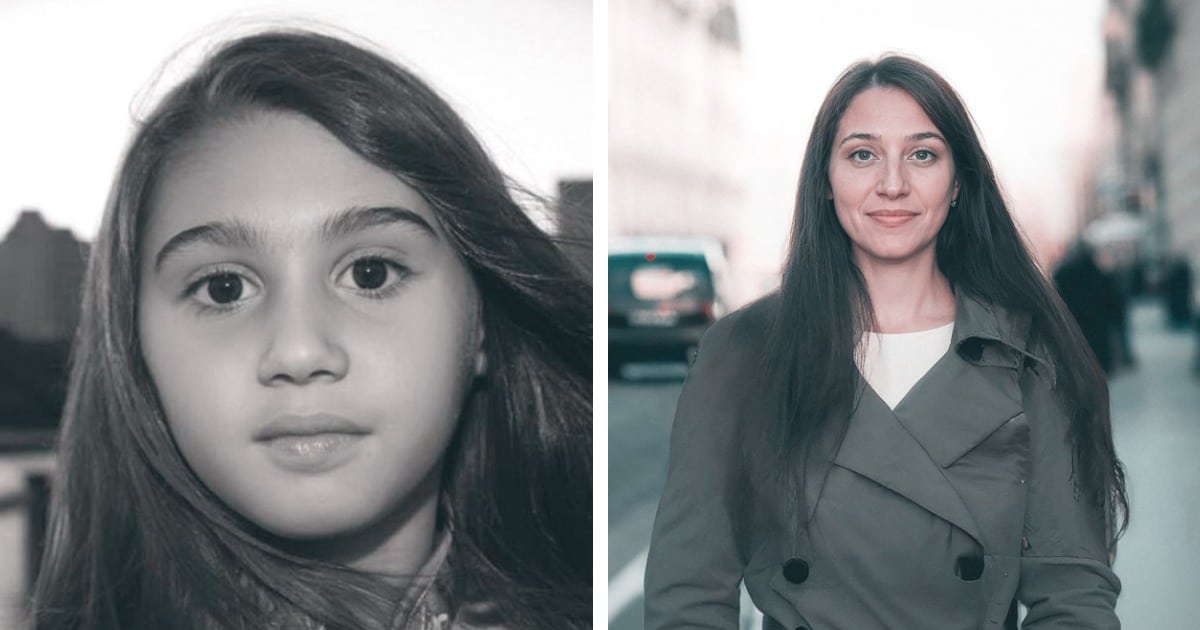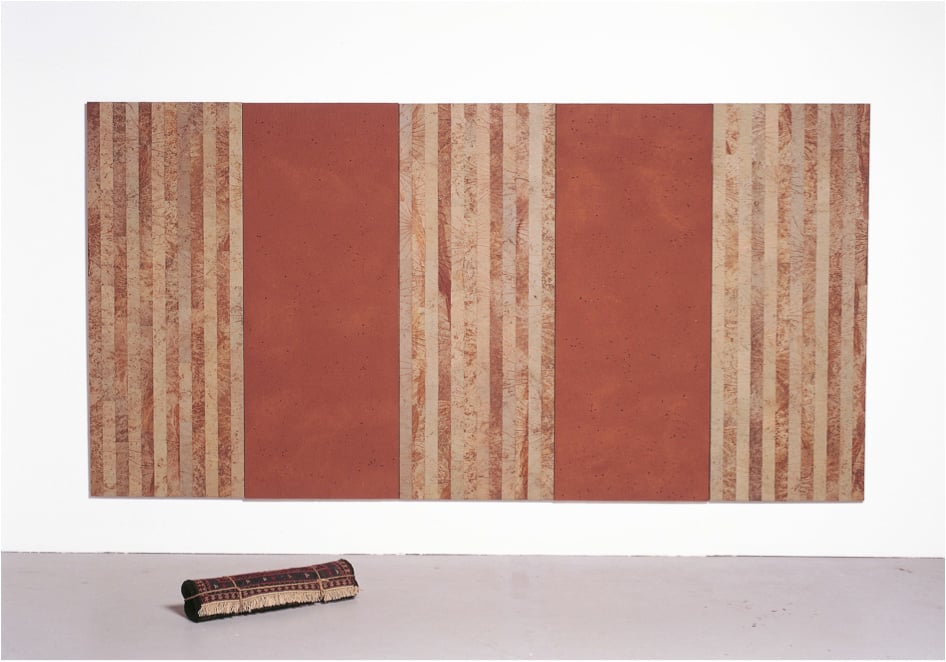Blanco sobre Blanco (White on White)
2014 - Film & Video (Film & Video)
0:45 minutes
Javier Castro
In the video Blanco sobre Blanco (White on White) , we see a white man appearing in a white screen embedded into a white wall— alluding to Malevich’s White on White series. Analogously, in Castro’s related work Negro sobre Negro (Black on Black) all we see is a completely black screen on a monitor that is recessed into a wall, also painted black. Gradually, the face of a man becomes visible as he steps out of the darkness and closer to the camera. As suggested by Castro, the color of this man’s skin allows him to pass unnoticed perhaps literally, but also metaphorically as he alludes with certain humor to the iconic work Black Square by Suprematist artist Kazimir Malevich, often referred to as the “zero point of painting” in Western art-historical discourses. Together, these works have a conversation: both of them appropriating Malevich’s monochromatic compositions, and conflating formalist discourses with racial and identity politics. Adding to the complexity of these works is the preference that art schools across Cuba and Latin America have given to Western discourses, inferiorizing artistic production from outside the West. Seen through this prism, Castro’s pieces are a poetic and provocative take on resolving formalism from within a body of colour.
Javier Castro was born in the in the neighbourhood of San Isidro in the heart of Habana Vieja, Cuba, where he lives and works. Influenced by the unique historical and present idiosyncrasies that define his neighbourhood—which is famous both as the site of José Martí’s (poet and martyr of the war for independence from Spain) childhood home, and the birthplace and murder of Alberto Yarini, a Cuban pimp, racketeer, and heroic symbol of Cuban identity—he films daily scenes from this area of the city, studying its tensions with an anthropological eye. Although he has previously worked in several media including installation and photography, he grew interested in video because of its ability portray the vitality of the present moment in the most immediate way possible. For Castro, it’s essential to capture reality in its most raw and unadulterated form, and hence he uses as little equipment as possible—no lights, sets or scripts—in order to preserve the natural dynamics of an environment. As a consequence, the people we see in his videos are never subject to artificial conditions. As described by Castro, the neighbourhood is his studio and his role as an artist is not to produce work, but rather to find and capture it without touching it. The social dimension of his practice is also important for Castro. At its very core, his work is about the people that he depicts and his own interrelations with them as another inhabitant of Habana Vieja. It’s this closeness and familiarity that allows him to earn his subjects’ trust, which ultimately leads to their honest portrayal. From his interactions with people emerge questions that speak of the human condition: the economy, language, sexuality, and violence all entangled in the stories of sociality and survival in Havana.
Colors:
Other related works, blended automatically
» see more

© » KADIST
Javier Castro
2012In the film La Edad de Oro (The Golden Age) Javier Castro asks several children to describe what they want to be when they grow up and what their best career option is in Cuba...
Related works sharing similar palette
» see more

© » MODERN MET PHOTOGRAPHY
AI Helps Families Forge "New Moments" with Lost Loved Oes Home / Photography AI Used to Help Families Forge “New Moments” With Lost Loved Ones By Jessica Stewart on January 31, 2024 Photographer and lawyer Alper Yesiltas has been an early adopter of AI, using the technology to see how he can manipulate existing imagery...

© » KADIST
Sin Wai Kin
2017A woman you thought you knew by Sin Wai Kin originates from a performance series titled A View from Elsewhere ...

© » KADIST
Karla Kaplun
2019Studying the body in movement, this series of drawings depart from Karla Kaplun’s work A ztec BLAST® Workout (AWB) ...
Other works by: » Javier Castro
» see more

© » KADIST
Javier Castro
2012In the film La Edad de Oro (The Golden Age) Javier Castro asks several children to describe what they want to be when they grow up and what their best career option is in Cuba...

© » KADIST
Javier Castro
2008In the video Negro sobre Negro (Black on Black) all we see is a completely black screen on a monitor that is recessed into a wall, also painted black...
Related works found in the same semantic group
» see more

© » KADIST
The Sable Eye with Ryanaustin Dennis, in partnership with Canyon Cinema Wednesday, June 6, Bar 6pm, Event 7pm, with works on view through June 9 Screening of Robert Nelson, Oh Dem Watermelons , 1965, 11 minutes, 16mm and Cauleen Smith, Chronicles of a Lying Spirit (by Kelly Gabron), 1992, 6 minutes, 16mm...

© » CONTEMPORARYAND
C& Magazine’s Highlights of 2023 You Might Want to Read Again | Contemporary And search for something search C& AMÉRICA LATINA EN FR MEMBERSHIP EN FR Editorial All Editorial Features Installation Views Inside the Library Interviews News Opinions Events All Events Art Fairs Conferences Exhibitions Festivals Performances Screenings Talks / Workshops C& Projects C& Artists’ Editions C& Commissions C& Center of Unfinished Business Show me your shelves! C& Education Mentoring Program Critical Writing Workshops Lectures / Seminars Membership Opportunities Print C& Audio Archive On Tour Places Explore IN CONVERSATION INSTALLATION VIEW WE GOT ISSUES DETOX LABORATORY OF SOLIDARITY CONSCIOUS CODES CURRICULUM OF CONNECTIONS LOVE ACTUALLY OVER THE RADAR BLACK CULTURES MATTER INSIDE THE LIBRARY LOOKING BACK Follow About Contact Newsletter Advertise Imprint Data protection Membership Contemporary And (C&) is funded by: Editorial All Editorial Features Installation Views Inside the Library Interviews News Opinions Events All Events Art Fairs Conferences Exhibitions Festivals Performances Screenings Talks / Workshops C& Projects C& Artists’ Editions C& Commissions C& Center of Unfinished Business Show me your shelves! C& Education Mentoring Program Critical Writing Workshops Lectures / Seminars Membership Opportunities Print C& Audio Archive On Tour Places Explore IN CONVERSATION INSTALLATION VIEW WE GOT ISSUES DETOX LABORATORY OF SOLIDARITY CONSCIOUS CODES CURRICULUM OF CONNECTIONS LOVE ACTUALLY OVER THE RADAR BLACK CULTURES MATTER INSIDE THE LIBRARY LOOKING BACK GO TO C& AMÉRICA LATINA About Contact Newsletter Advertise Imprint Data protection Membership Best of 2023 C& Magazine’s Highlights of 2023 You Might Want to Read Again From climate colonialism to new perspectives from queer artists in Mozambique, these are some of our most-read articles this year...

© » KADIST
Toyin Ojih Odutola
2015As she traces the same shape again and again, Ojih Odutola’s lines become darker and deeper, sometimes pushed to the point where their blackness becomes luminous...


